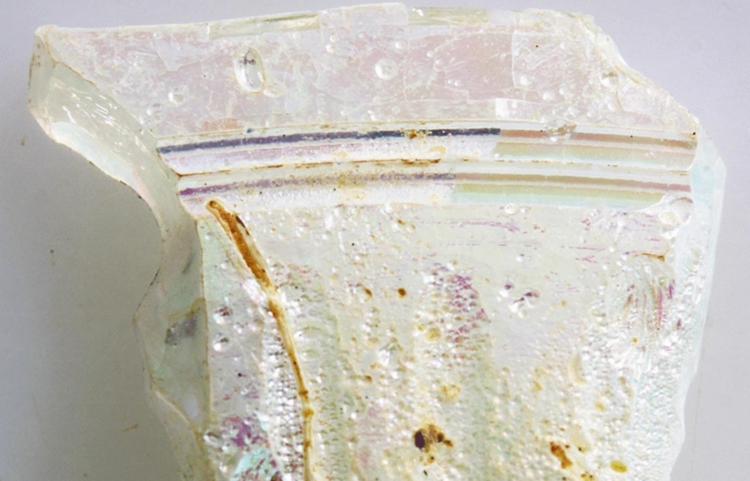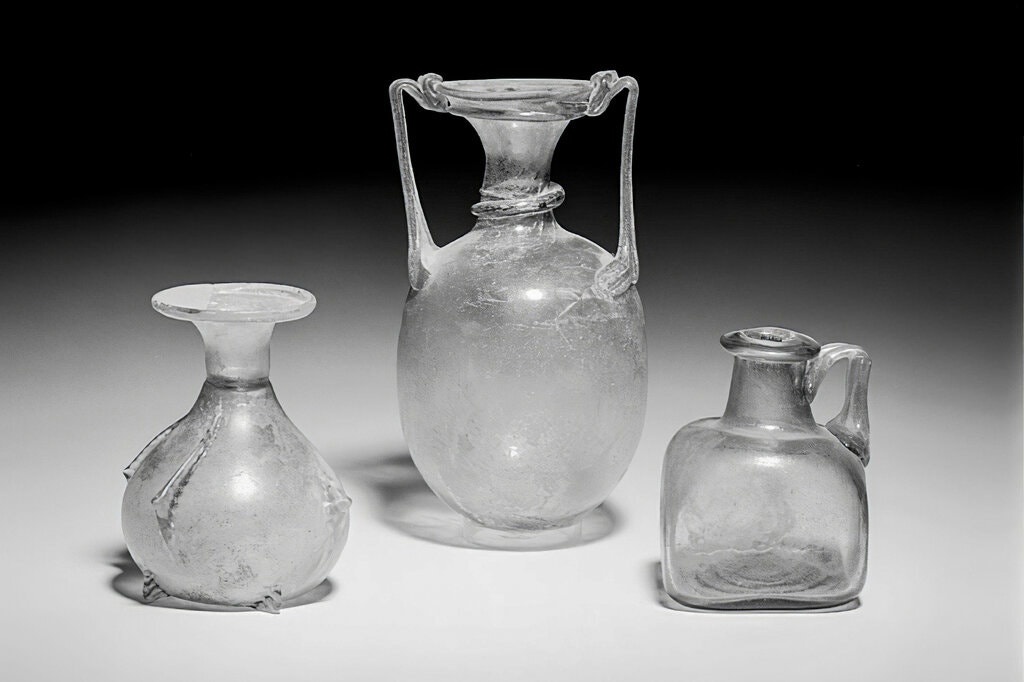Trace quantities of isotopes hint at the true origin of a Alexandrian Glass, the highly prized glass from the Roman Empire.
The following written content from Ross Pomeroy

Two thousand years ago, the Roman Empire was cranking out glassware unsurpassed in intricacy, beauty, or design, with skill and efficiency that wouldn’t be topped until the advent of modern industry in the 18th century. Large production operations scattered across the empire combined sand and nitrate in kilns reaching 1100 degrees Fahrenheit, creating giant gobs of glass that were then cooled and distributed in huge hunks far and wide. Glassworkers would then purchase this solid glass, re-melt it, and craft it into vessels and other wares.

Various types of glass were manufactured, but the most prized may have been Alexandrian glass, described by one ancient writer as “colourless or transparent, as closely as possible resembling rock crystal.” Glassmakers achieved this feat by oxidizing the sand’s iron from blue Fe2+ to pale Fe3+ by adding antimony oxide. The glass offered a blank slate for decoration and was sought after for serving vessels. The glass’ name hints that it hailed from Egypt when it was a Roman province (the capital was Alexandria), but its precise origin has remained elusive to historians.
Glass was highly valued across the Roman Empire, particularly a colorless, transparent version that resembled rock crystal. But the source of this coveted material — known as Alexandrian glass — has long remained a mystery. Now, by studying trace quantities of the element hafnium within the glass, researchers have shown that this prized commodity really did originate in ancient Egypt.
Two thousand years ago, the Roman Empire was cranking out glassware unsurpassed in intricacy, beauty, or design, with skill and efficiency that wouldn’t be topped until the advent of modern industry in the 18th century. Large production operations scattered across the empire combined sand and nitrate in kilns reaching 1100 degrees Fahrenheit, creating giant gobs of glass that were then cooled and distributed in huge hunks far and wide. Glassworkers would then purchase this solid glass, re-melt it, and craft it into vessels and other wares.
Various types of glass were manufactured, but the most prized may have been Alexandrian glass, described by one ancient writer as “colourless or transparent, as closely as possible resembling rock crystal.” Glassmakers achieved this feat by oxidizing the sand’s iron from blue Fe2+ to pale Fe3+ by adding antimony oxide. The glass offered a blank slate for decoration and was sought after for serving vessels. The glass’ name hints that it hailed from Egypt when it was a Roman province (the capital was Alexandria), but its precise origin has remained elusive to historians.
One of the colourless Roman glass sherds (J13-Ga-12-18) analysed in this study. Purple splashes are iridescence due to weathering.Danish-German Jerash Northwest Quarter Project
A team of archaeologists from Aarhus University in Denmark and University College London has now traced the glass to its apparent source. They detailed their findings in the journal Scientific Reports.
Examining hafnium, neodymium, and strontium isotopes in hundreds of samples of Alexandrian glass, the researches were able to link the materials’ distinct hafnium isotopes to sands and ancient glass production sites along the Mediterranean coast of Egypt.
“We attribute the striking difference in hafnium isotopes of Egyptian versus Levantine glasses to sorting of zircons in Nile sediment,” they wrote. Read more from RCS





